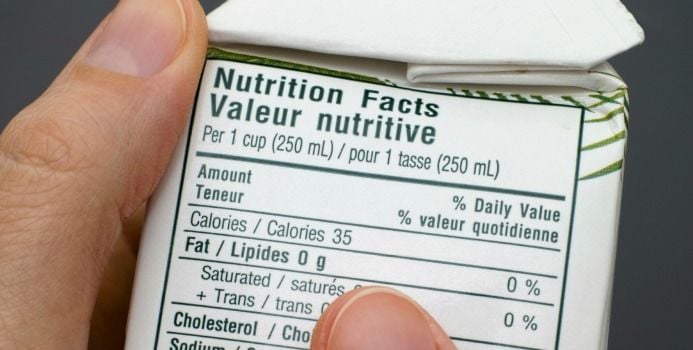It has been over 20 years since the first Nutrition Facts label made an appearance, yet the label itself has seen little changes since its initial debut. With the exception of trans-fat labeling in 2006, the original facts panel has remained largely unchanged. However, since its inception in 1992, critics have slammed the nutrition facts label for not including enough information and for not reflecting the way current Americans eat.
Now, for the first time, consumers can expect to see refreshed and updated Nutrition Facts labels on their grocery store shelves. Announced by the Food and Drug Administration (FDA) in 2014, the changes will impact both the labels’ design and what they measure, re-configuring serving sizes and the nutritional information displayed.
1. Improved Design
The proposed Nutrition Facts label will feature larger, bolder type for items such as calories and the amount of servings per container, with the goal of emphasizing their importance in maintaining a healthy diet. In addition, the Daily Value percentages, which tell you how much of each nutrient you should consume each day, will be shifted to the left-hand side of the label so that consumers will naturally read them first.
2. Serving Sizes
Current serving size standards were set in 1994, following Nationwide Food Consumption Surveys. According to the FDA, current data shows that about 17% of serving sizes no longer fit American eating habits. New labels will be altered to more accurately reflect how people eat and drink today. In addition, for foods that come in larger packages which could potentially be consumed in one sitting, food manufacturers will use a two-column label, showing the calorie and nutrition information of both a single serving and the entire package.
3. Added Sugars and Calories from Fat
Both the sugar and fat categories of the label will be altered to place an emphasis on “type” versus “amount.” First, rather than just listing total “Sugars,” a new category for “Added Sugars” will be adopted to help consumers differentiate between natural and added sugars. Second, research has indicated that the type of fat consumed is more important than the amount of fat consumed. Therefore, the “Calories from Fat” category will be removed from the new label completely, leaving the “Total Fat,” “Saturated Fat,” and “Trans Fat” categories.
4. Daily Values
The Daily Values that are used for % Daily Value calculations will be revised and based on the most current scientific and published recommendations. In addition, the new label will require food manufacturers to list actual amounts of both potassium and vitamin D in addition to their % Daily Values. This is in response to the fact that many Americans are not consuming enough of either nutrient, which are both crucial for good health. While nutrients such as calcium and iron will continue to be required, Vitamins A and C will be included on a voluntary basis.
Currently, the FDA is still gathering comments, making an exact timeline for the new label changes hard to confirm. However, once passed, food and beverage manufacturers will have two years to ensure their labels are in compliance.
In theory, the proposed changes will make it easier for consumers to make informed decisions about the foods that they are eating. The new labels will aim to reflect the latest links between science, nutrition and chronic diseases such as obesity and cardiovascular disease. While some continue to call for more information, the changes proposed will provide an important first step, bringing the Nutrition Facts label into the 21st century.
Sarah Dreifke is a freelance writer based in DeKalb, IL with a passion for nutrition education and the prevention of chronic disease. She holds a Bachelor of Science in both Dietetics and Life Sciences Communication from the University of Wisconsin-Madison. Currently, she is working towards a combined Master's Degree in Nutrition and Dietetics as well as a dietetic internship at Northern Illinois University.



